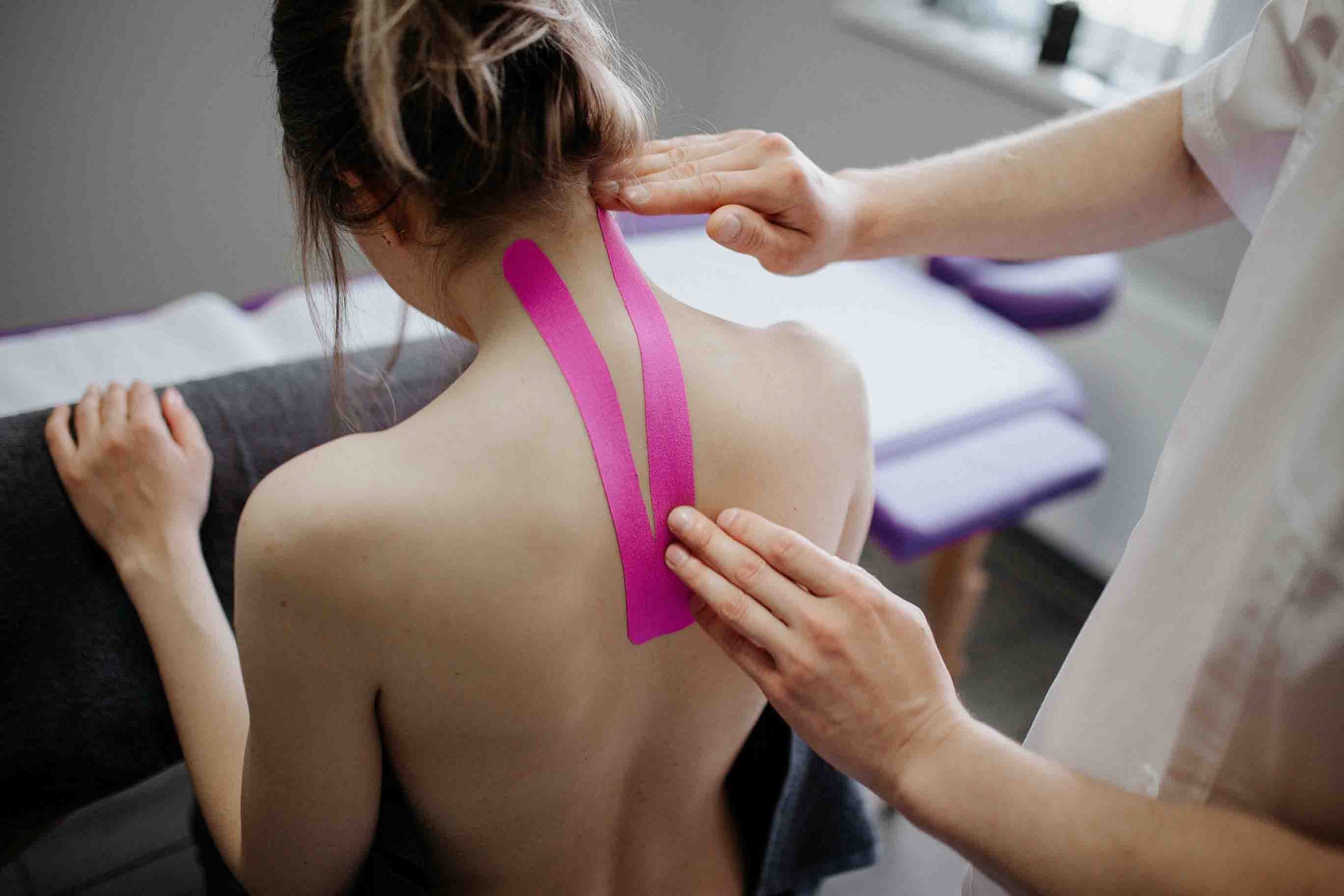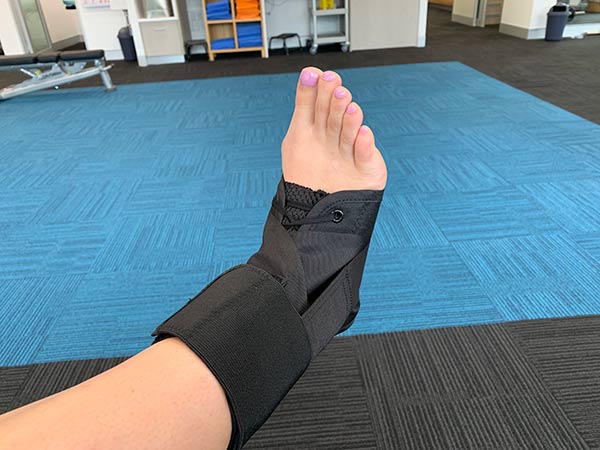Taping: How to Tape Your Ankle, Knee or Plantar Fasciitis
Many injuries benefit from taping for support and improved muscle activation for positional changes. However, an accurate diagnosis is the key, as different injuries require different taping techniques even in the same body part. So if you have an injury, you should see a physiotherapist at Sport & Spinal Physiotherapy and your physio will demonstrate the appropriate taping technique, if required, for your particular injury.
Ankle sprains, plantar fasciitis and kneecap pain (patellofemoral pain) in particular benefit from taping. We may apply certain taping techniques for these injuries to reduce pain with exercise often allowing you to make an early return to sport.
The descriptions below on the principles of taping, skin preparation, bracing, tape application and tape removal can be applied to any injury but are directed in particular to anterior knee pain, plantar fasciitis and ankle sprains.
Principles of Taping
Sprained ankle
Once an ankle has been sprained and the ligaments damaged, that ankle will be less stable and more susceptible to future sprains. The best way to prevent future sprains is to have strong supporting muscles around the ankle but in some circumstances this is not enough and we need to support the ankle externally.
In this situation it is important to protectively strap the ankle, especially if you wish to continue running and playing sport.
Anterior Knee Pain
Often with anterior knee pain, there is a muscle imbalance that results in patella maltracking (not staying centred) during movement. This is because the inside thigh muscle (VMO) has poor function and the kneecap tends to track laterally during loading activities. This places stress to the structures around the patella resulting in pain. Taping of the kneecap joint can help improve patella tracking by improving VMO function, often resulting in less pain.
Plantar Fasciitis
Plantar Fasciitis is an inflammation of the plantar fascia, a thick fibrous band of tissue at the bottom of the foot, which runs from the heel to the base of the toes. When placed under too much stress, the plantar fascia stretches too far and tears. It is an overuse injury commonly caused by excessive pronation (flat feet), rigid feet (high arched feet), poor foot biomechanics, poor footwear, muscle tightness and muscle weakness. Taping with the low dye method helps support the fascia allowing sufferers to walk without pain. It is an effective short term solution to the problem, but for a long-term fix, physiotherapy to improve muscle length and strength, and podiatry with custom moulded orthotics are often required.
Skin Preparation
Make sure your skin is clean of oils and creams. The taped area should be clean-shaven – just below mid-shin level to the ankle joint for ankle taping, and 5cm above and below the patella for kneecap taping. For long periods of taping, hypoallergenic adhesive fabric is often used underneath sports tape to provide a base to which the tape can better adhere as well as prevent skin damage from the tapes adhesive. Occasionally, protective film barriers may also be required to protect the skin from the adhesive.
Sport & Spinal Physiotherapy has a wide range of sports tape, adhesive fabric and protective films for all your taping needs.
Bracing
Generally taping provides greater stability than braces. Taping is always the method of choice for anterior knee pain and for the first few weeks after returning to sport after an ankle sprain. Braces can also be used with tape post ankle sprain for extra support if required.
If your ankle sprain is severe you may have recurrent instability that will require ongoing support during sport. Taping provides good support but can be expensive if used extensively. Ankle braces are more cost effective in the long run and are a good option for training whilst you may still opt to tape for games.
Tape Application
If you are experiencing anterior knee pain during activities of normal living such as walking or going up and down stairs, then you should tape your kneecap joint for all your waking hours. The greatest support for tape occurs in the immediate 15-20 minutes after taping, so try taping any ankle injuries just before your warm up.
Tape Protective Films
Some people have allergies to the adhesive tape despite it being hypoallergenic. These people may need protective film barriers or hypoallergenic adhesive fabric to protect the skin.
Tape Removal
Tape has strong adhesive and it not unheard to completely de-skin an area should you rip the tape off quickly. It is easiest to take the tape off in a shower when the tape is wet. Hold the skin down and slowly peel the tape back on itself so you do not rip the skin.
VIDEOS
Ankle taping
This is a good video of the basic ankle taping method for mild ankle inversion sprains. More serious sprains may require other taping techniques to further stabilise the ankle. Please check with your physiotherapist from Sport & Spinal Physio before proceeding.
Patellofemoral taping
Although not ideal, this is the best video available on the basic patellofemoral McConnell style taping for anterior knee pain. More complex patellofemoral pain disorders may require adjustments to this method. Please check with your physiotherapist from Sport & Spinal Physio before proceeding.
Low Dye Taping
This is a good video of the low dye taping method to hold the arch up for lower limb disorders and is particularly beneficial for plantar fasciitis. Please check with your physiotherapist from Sport & Spinal Physio before proceeding.
FREE TAPING
See a physiotherapist at Sport & Spinal Physiotherapy to show you correct taping for your injury. We will tape all current client injuries for FREE when you provide your own taping supplies purchased from us.



This excellent website certainly has all of the information and facts I needed concerning this subject
and didn’t know who to ask.